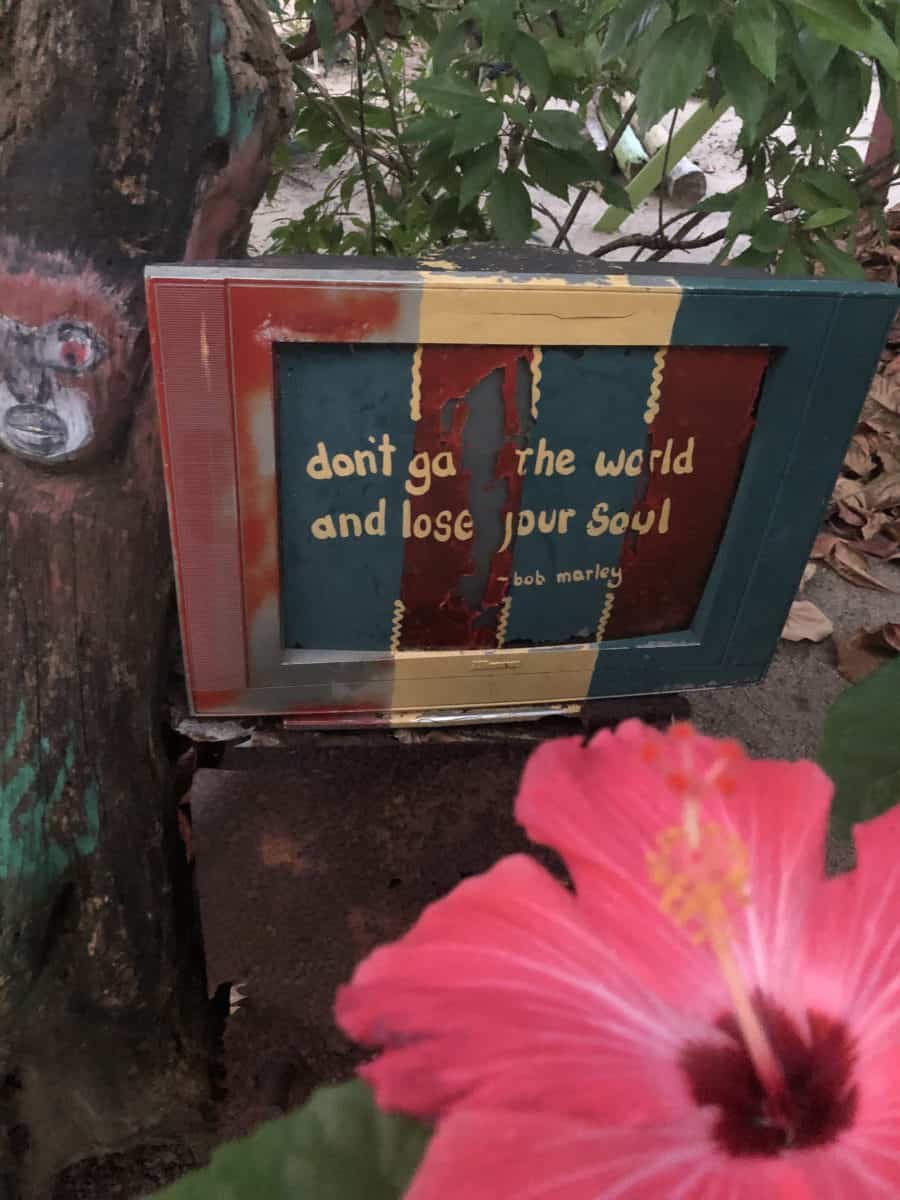One of the things I swore to myself when I graduated high school was that I would never, ever ride a school bus again. I hadn’t had particularly bad experiences during my bus years, but it felt symbolic of a certain level of freedom to be able to leave them behind. Fast-forward about a decade, and I found myself eating my words – or rather, squashing them against the window between me and my luggage, somewhere below my knees, which were fully pressed up against the seat in front of me. Funnily enough, those buses had felt a lot roomier when I was shorter and/or able to flop and twist around at will. But in Belize, the familiar yellow behemoth is a crowded mode of public transport – and an interesting example of international economics.
The “chicken buses,” as they are called, are ubiquitous throughout Central America. While they were fairly standard looking in Belize, many countries offer decked-out versions, resplendent in chrome and some truly surreal/nightmarish murals. Their popularity began when the U.S. started retiring large chunks of its bus fleet once they were deemed “too old,” at which point they could be bought cheaply, and en masse, by various neighbors to the south. They all take on different aesthetics, but with the same general motif: unpretentious, inexpensive, and a solid option for getting around. The Belizean ones were particularly casual; as we drove along, people would frequently flag us down from the road, from their front porches, etc. In one smooth motion, the bus would slow, let them on, and press forward, all without missing a beat. The route also offered some beautiful scenery, as the cityscape gave way to verdant jungles and then, finally, the ocean, rippling invitingly. Moments later, I was in a Jimmy Buffett-style paradise.

Ah, sweet Placencia. Such a beautiful, splendid place that was the site of roughly 30 comical mishaps for me. I will say, if you need to relax after a long day of Looney Tunes and/or Kafkaesque chaos, this is the place to do it. It all started with the water. Anyone who’s met me for, say, more than 30 seconds knows that I’m a little bit obsessed with aquatic environments. Ok, extremely obsessed. If it’s even remotely possible to swim in a body of water, I will do so, with gusto. Naturally, when I realized that my hostel was mere steps from the beach, I was ecstatic, and leapt into the Caribbean Sea as soon as I could get changed. Within a few minutes, I was reminded of two cardinal rules of the ocean:
- If you see a lot of people milling around the beach, but none of them are swimming, there’s probably a reason.
- Jellyfish are particularly fond of still, salty waters.
Cut to me hastily exiting the waves, unleashing a string of words that would make a sailor blush, with my arm slightly aflame. This was actually my second ever run-in with a jellyfish. The first had come just last summer, when I flung myself into the Salish Sea during a Seattle heat wave. And I assure you, it was not an experience worth repeating. So the swim was replaced with a long, somewhat grouchy stint in a hammock. Of course, it’s hard to be too mad about anything in a hammock.

The next day was devoted almost entirely to dealing with some banking issues. (A long story in and of itself. Suffice it to say, banks are sometimes comically inept, and hotel receptionists are angels in disguise.). But after that, I was free to explore and relax in a truly idyllic town. Placencia is mostly known as a launching point to other adventures (snorkeling, boat tours, etc.), but it had a charm all its own, sedate and friendly, with galleries and shops scattered along the boardwalk and side streets. Incidentally, said boardwalk holds the Guinness World Record for being the narrowest main street in the world, perpetually sprinkled with sand.

It was also interesting to see a town so thoroughly inundated with not only tourists, but also residents who had left their home countries to build elaborate compounds amongst the marshes and palm trees. Even though the local cultures were alive and well, much of the infrastructure I saw walking around town was clearly geared towards the luxurious. Once I left the main drag, every second building was a mansion or a resort; every third vehicle on the road, a golf cart. One of my hostelmates grew up in Belize, and talked at length about the property crisis stemming from all of those shiny, happy expats. Belizeans are genuinely at risk of running out of land, as the area becomes better known and the villas keep expanding. It was a sobering reminder of some of the more negative effects of popularized paradises, especially ones with such obvious stratification. However beneficial it may be to have visitors in these types of towns (and, let’s be honest, to visit such a lovely spot), it is not without its complications. Placencia is among the many places I have visited whose progress I will be eager to track as the travel industry regenerates and reevaluates.

After a couple of beautifully beachy days (and a tentative, but ultimately successful, return to the water), it was time to move inland – and briefly, wonderfully, underground.
